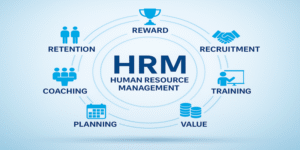Tesla, Inc., established in 2003, has become a global pioneer in electric vehicles (EVs) and sustainable energy solutions. Under the leadership of Elon Musk, Tesla has not only disrupted the automotive sector but also redefined global energy transition strategies. This case study examines Tesla through a PESTEL framework — analysing Political, Economic, Social, Technological, Environmental, and Legal factors — to understand how these external forces shape strategic decision-making within the company.
According to Palazzo and Micozzi (2024), PESTEL analysis serves as a critical strategic tool enabling firms to identify and respond to macro-environmental opportunities and threats, ensuring alignment with long-term organisational goals. This study integrates perspectives from academic journals, textbooks, and credible industry reports to explore Tesla’s complex strategic landscape.
1.0 PESTEL analysis
1.1 Political Factors
Political influences play a vital role in Tesla’s strategic decisions, particularly regarding regulatory frameworks, trade policies, and government incentives for clean energy.
Governments globally promote green energy transitions, offering subsidies and tax rebates for electric vehicles (Barrie, 2023). In the United States, the Inflation Reduction Act (2022) renewed tax credits for EV purchases, directly benefiting Tesla’s sales. Similarly, the European Union’s Fit for 55 initiative promotes zero-emission mobility, reinforcing Tesla’s strategic investment in its Gigafactories in Berlin and Texas.
However, Tesla’s operations are vulnerable to trade tensions and protectionist measures. For instance, the U.S.–China trade war increased tariffs on imported components, compelling Tesla to build its Shanghai Gigafactory to localise production (Lei, 2025). Such strategic localisation decisions align with contingency theory, which posits that organisational strategies must adapt to environmental constraints (Johnson, Scholes & Whittington, 2020).
1.2 Economic Factors
Tesla’s strategic decisions are heavily influenced by economic cycles, interest rates, and supply chain costs. The global pandemic and subsequent semiconductor shortages disrupted production, underscoring the need for supply chain diversification (Giménez, 2022).
Tesla’s decision to vertically integrate battery production through Gigafactories in Nevada and Berlin represents a strategic move to control costs and reduce dependence on suppliers (Seawell, 2024). This approach mirrors Porter’s value chain theory, which advocates internalising critical functions to achieve sustainable competitive advantage (Porter, 2008).
Fluctuations in commodity prices, particularly lithium and nickel, pose economic risks. As highlighted by De Sousa and Castañeda-Ayarza (2022), the EV industry is particularly exposed to raw material volatility. Tesla mitigates this through long-term supplier contracts and innovations in battery recycling, ensuring long-term cost stability and resource efficiency.
1.3 Social Factors
The shift in consumer values towards sustainability, green technology, and luxury innovation significantly shapes Tesla’s strategic positioning. Tesla’s brand embodies eco-conscious luxury, appealing to consumers who view EV ownership as both a status symbol and a moral statement (Abdelazim, 2022).
Social trends also drive Tesla’s diversification into energy storage and solar solutions, as global consumers demand integrated sustainability ecosystems. According to McCain (2019), Tesla’s success hinges not only on technological superiority but also on cultivating a strong brand community aligned with environmental consciousness.
Furthermore, demographic changes in emerging markets, such as China and India, present new opportunities. These societies exhibit increasing demand for clean mobility due to urbanisation and pollution concerns (Haojie & Tleukhanovna, 2022). Tesla’s strategic entry into these markets through competitive pricing (e.g., Model 3 and Model Y) illustrates an adaptive marketing strategy responsive to socio-economic contexts.
1.4 Technological Factors
Tesla’s competitive edge lies in its technological innovation — from battery development to autonomous driving and AI-based systems. The company invests heavily in research and development (R&D), spending over $3.9 billion in 2024, reaffirming its commitment to continuous innovation (Yan, 2024).
Tesla’s Autopilot and Full Self-Driving (FSD) systems demonstrate its strategic shift from an automotive manufacturer to a tech-oriented mobility provider. As Haertler and Seeber (2023) note, Tesla’s technological orientation enhances its ability to collect and leverage data analytics, feeding back into product improvement and strategic decision-making.
However, technological disruption also presents ethical and regulatory challenges. The deployment of AI-driven vehicles raises safety, privacy, and liability concerns, compelling Tesla to integrate ethical foresight into its strategic planning (Palazzo & Micozzi, 2024). Moreover, competitors like BYD, Rivian, and Lucid Motors are intensifying innovation races, pushing Tesla to balance first-mover advantages with sustained R&D efficiency.
1.5 Environmental Factors
Sustainability is central to Tesla’s mission “to accelerate the world’s transition to sustainable energy.” Environmental factors such as climate change, carbon regulation, and ecological awareness directly influence Tesla’s strategic framework.
Tesla’s focus on carbon-neutral manufacturing, use of renewable energy in production, and battery recycling programmes align with global sustainability goals (Lu, 2025). The Paris Climate Agreement and related national policies drive Tesla’s strategy toward sustainable innovation and corporate social responsibility (CSR) (Tariq, 2025).
Moreover, Tesla leverages environmental consciousness as a market differentiator, reinforcing its brand as the leader in sustainable mobility. However, environmental activism and resource extraction concerns — particularly regarding lithium mining — pose reputational risks. Strategic decisions thus balance profitability with environmental ethics, an embodiment of triple-bottom-line thinking (Elkington, 1997).
1.6 Legal Factors
Tesla operates within complex legal environments, navigating automotive regulations, data protection laws, and labour standards across jurisdictions. Regulatory scrutiny has increased, especially concerning Autopilot safety and advertising claims. According to Seawell (2023), Tesla’s proactive compliance and lobbying efforts are essential strategic actions to mitigate regulatory risks.
Intellectual property management also plays a pivotal role in Tesla’s competitive strategy. Although Tesla famously open-sourced its patents in 2014 to accelerate EV adoption, this decision reflects strategic altruism — promoting market growth to indirectly strengthen Tesla’s industry leadership (Anderson & Buengel, 2025).
Moreover, evolving data privacy laws, such as the EU’s General Data Protection Regulation (GDPR), influence Tesla’s collection of driver data. Legal foresight in these areas ensures Tesla maintains trust and legitimacy, reinforcing institutional theory’s emphasis on regulatory alignment (DiMaggio & Powell, 1983).
2.0 Strategic Decision-Making Perspectives
From a strategic management perspective, Tesla’s use of the PESTEL framework supports scenario planning, risk management, and strategic agility. As Sushil and Dhir (2024) emphasise, dynamic capabilities enable firms like Tesla to reconfigure resources in response to environmental volatility.
Tesla’s strategic decisions — such as entering the Chinese market, expanding Gigafactories, and investing in AI — are informed by systemic analysis of external environments. This reflects the “strategy as a process” view (Mintzberg et al., 2005), where continuous scanning and feedback shape decision-making rather than static long-term plans.
Furthermore, Tesla integrates PESTEL insights into its corporate strategy formulation, aligning environmental scanning with Porter’s Five Forces and SWOT analysis (Barrie, 2023). This holistic approach supports evidence-based decision-making and enhances Tesla’s strategic resilience.
In conclusion, Tesla’s success as a global disruptor is deeply intertwined with its adeptness in strategic decision-making informed by PESTEL analysis. By continuously adapting to political incentives, economic fluctuations, social dynamics, technological advances, environmental imperatives, and legal constraints, Tesla exemplifies strategic flexibility in an unpredictable world.
The case of Tesla demonstrates how macro-environmental awareness and evidence-based strategy underpin sustainable competitive advantage. Future strategic challenges will likely revolve around ethical AI deployment, supply chain sustainability, and regulatory adaptation — areas where PESTEL will remain an indispensable analytical lens.
References
Abdelazim, Z. (2022). Business Strategy: Automotive Business Case – Tesla. SSRN. https://papers.ssrn.com/sol3/papers.cfm?abstract_id=4453857.
Anderson, L. & Buengel, D. (2025). Strategic Management and Case Analysis. Pressbooks, Virginia Tech.
Barrie, G. (2023). An Analysis of Tesla’s Market Competitiveness Using the SWOT-PEST Analysis. Vestnik Tomsk State University.
De Sousa, G.C. & Castañeda-Ayarza, J.A. (2022). PESTEL Analysis and the Macro-Environmental Factors that Influence Electric Vehicles. Case Studies on Transport Policy, 10(3), 1–14.
Giménez, M.C. (2022). Case Study: A Five-Year Business Strategic Plan for Tesla. ResearchGate.
Haertler, L. & Seeber, J.L. (2023). Valuation of Tesla Using PESTLE and Porter’s Five Forces. Copenhagen Business School.
Haojie, M. & Tleukhanovna, K.S. (2022). Developing and Implementing an Organisation’s Development Strategy: A Case Study of Tesla Inc. International Journal of Management Studies.
Johnson, G., Scholes, K. & Whittington, R. (2020). Exploring Corporate Strategy. 11th ed. Pearson Education.
Lei, C. (2025). Analysis of Tesla International Strategies. Springer.
Lu, Z. (2025). An Analysis of Tesla’s Market Position and Future Prospects. Atlantis Press Proceedings.
McCain, C. (2019). A Strategic Audit of Tesla, Inc. University of Nebraska.
Palazzo, M. & Micozzi, A. (2024). Decision-Making Strategies and Tools. Emerald Publishing.
Porter, M. (2008). The Five Competitive Forces that Shape Strategy. Harvard Business Review.
Sushil & Dhir, S. (2024). Strategic Management: Reflecting Strategic Flexibility. Springer.
Tariq, M.U. (2025). Vision and Strategy: Steering Modern Enterprises Towards Long-Term Success. IGI Global.
Yan, Y. (2024). Navigating the ESG Landscape: Strategic Recommendations for Tesla. Atlantis Press.









